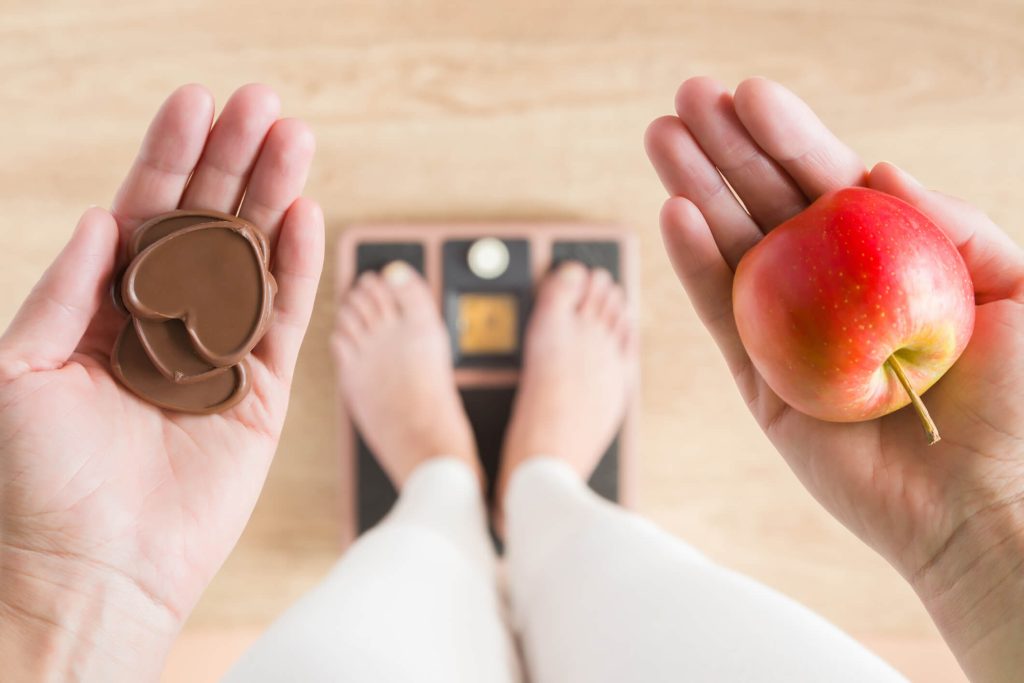
7 Ways To Maximize Metabolism


7 Ways To Maximize Metabolism
It could be a metabolic adaptation when your body starts to burn fewer and fewer calories in response to a reduction in food intake. This is a natural defense mechanism that helps protect your body from starvation.
However, if your body shifts into this state, losing weight and seeing lasting results is much more difficult.
The good news is that there are ways to overcome metabolic adaptation and jump-start your weight loss journey.
With the right mix of diet, exercise, and lifestyle, you’ll start seeing the results you want in no time.
Maximizing Calories Out
When it comes to getting in shape and keeping weight off, one thing is more important than anything else: calories out.
Calories out are one of the most important yet least talked about aspects of weight loss, which is why so many people fail to achieve their goals. To lose weight, you must create a caloric deficit throughout the day. But most people create a caloric deficit by minimizing calories, which eventually can lead to metabolic adaptation.

No matter how healthy your diet is, you won’t see any results if you’re not burning more calories than you consume throughout the day.
There are four components of calories that you can maximize. Maximizing these components will allow you to eat more and will make it easier to maintain your fat loss progress in the long run.
Basal Metabolic Rate (BMR)
BMR is the number of calories your body burns at rest. It’s the calories you need to keep your body functioning and accounts for more than 60% of the calories you burn daily.
BMR is more affected by lean muscle mass than fat, which is why BMR is often higher in men than women and decreases as we age.
Thermic Effect Of Feeding (TEF)
TEF is the energy your body uses to digest and absorb the food you eat.
It accounts for about 10% of the calories burned daily and varies depending on the types of food consumed.
For example, protein has a higher TEF than carbohydrates or fat because protein requires more energy to break down and be digested. The thermic effect of protein is 20-30%, while the thermic effect of carbohydrates and fats is 5-10% and 0-3%, respectively. So, you’ll get the lowest protein net calories, followed by carbs and fats. Even on a caloric surplus, it’s hardest to gain fat when you’re eating a lot of protein.
Processed, refined foods tend to have a lower TEF than whole, unprocessed food.
Non-Exercise Activity Thermogenesis (NEAT)
NEAT is the energy you burn from all the little things you do that aren’t formal exercise—like walking around your house, tapping your foot, or even shivering.
This component of calories out makes up a large part of the calories you burn daily, but can vary widely depending on your job, lifestyle, and habits.
For example, some people may burn an extra 200 calories daily, while others may burn 1,000 calories solely through NEAT.
NEAT can be a significant factor in weight loss or weight gain. The more active your lifestyle is, the more calories you will burn without even thinking about it.
If you have a sedentary job, you may need to add more informal movements into your routine. On the other hand, if you have a physically demanding job, you likely do not have to exercise quite as much consciously.
Exercise Activity Thermogenesis (EAT)
As I’m sure you can guess, EAT is the energy you burn via formal exercise such as running, lifting weights, or playing sports.
Surprisingly, EAT is usually just a small part of the calories burned daily, but can still have a significant factor in weight loss.
Metabolism
Metabolism is the process by which your body turns food into energy, and Total Daily Energy Expenditure (TDEE) is crucial to keep track of. The 4 components mentioned above make up TDEE.
Calories that don’t get burned throughout the day may become stored as fat, which is much harder to burn off.
Weight Loss Is A Matter Of Caloric Deficit

You can think of shifts in weight like a math equation.
If the number of calories you burn is greater than the number of calories you consume, you’ll lose weight. If the reverse happens, you’ll gain weight. And if the two sides are equal, your weight will stay the same.
To lose weight, you need to create a caloric deficit by eating fewer calories than your TDEE. This can be as simple as eating fewer calories or taking short walks throughout the day. It can also be accomplished through formal exercise.
However, your body has a built-in survival mechanism to prevent death from starvation. So, it’ll eventually reduce the TDEE and make you hungrier. Keeping your metabolism or TDEE high is crucial for continued fat loss and keeping it off in the long term. Here’s how:
Additional Ways To Maximize Calories Out
Build More Muscles
The more muscle mass you have, the higher your BMR will be. For muscles to grow, your body uses calories, which increases calories. Once this happens, your BMR will slightly increase. It’s a win-win.
Now you don’t have to become a bodybuilder to see the benefits. Adding a few extra pounds of muscle can make a big difference and help keep unwanted weight off.
Move Throughout The Day
Sedentary behavior (sitting, standing, or lying down) burns very few calories. People who sit for long periods have slower metabolisms than active individuals and are more likely to become obese.
Prolonged sitting can negatively affect your metabolism. If you have an office job, you should get up frequently to do some squats.
This may not sound like much, but the benefits will increase over time.
Other options to counteract the effects of sitting include standing up to stretch, taking short walks, doing some push-ups, or perhaps a mini yoga session.
Incorporating these short stents of activity is a sneaky way to lose fat.
Cold Exposure – Burn Calories And Increase Brown Fat
Regular exposure to cold temperatures can help boost your metabolism and lose weight. Your body burns additional calories to maintain its normal core temperature and, over time, builds brown fat. Don’t get scared. Brown fat is actually good.
You can think of brown fat as fat that helps burn calories instead of storing them as white fat does. The more brown fat you have, the more calories you burn.
Exposure to cold temperatures is the key to turning white fat into brown fat and can increase fat brown stores by as much as 42%.
Cold exposure can also help improve mitochondrial function. Mitochondria are the powerhouses of your cells and play a key role in metabolism.
Push Your Brain

Your brain is one of the most active organs in the body. It uses about 20% of the calories you burn each day, all on its own.
So if you want to boost your metabolism, one of the best things you can do is challenge your brain with mental activities.
Additionally, people who engage in mentally stimulating activities on a regular basis are less likely to experience age-related cognitive decline.
So, if you want to keep your metabolism high and your brain sharp, make sure you work out your brain along with the rest of your body. Do puzzles, read challenging books, and learn new skills.
Exercise
When you exercise, not only are you actively burning more calories than when you’re sitting at home, but you’ll also increase muscle mass if you’re performing certain types of training, such as weight lifting or high-intensity interval training (HIIT).
HIIT is performing short rounds of high-intensity, explosive exercises followed by short rest periods. You can target various muscle groups through HITT, and it is a great way to both increase muscle mass and boost cardiovascular fitness.
Weight lifting focuses mainly on increasing muscle mass and strength. You won’t see the same cardiovascular benefits as you do with HIIT or cardio, but your muscles will build up the quickest with this type of exercise.
Cardio training, such as running or cycling mainly improves cardiovascular fitness and endurance. However, it can still increase muscle mass, although not to the same degree as weight lifting or HIIT.
As mentioned before, building muscles takes energy and calories; that’s why weight lifting and HITT are so great for creating a caloric deficit. Even when you leave the gym, you’re still increasing calories out for the day.
Try to fit in at least 30 minutes of strength-building exercise every day. This will benefit you in more ways than you think, and that unwanted fat will fall off and stay off.
Disrupt Metabolic Adaptation
If you’ve been dieting for a while, you may have noticed that losing weight becomes harder and harder.
This is because your body adapts to the lower calorie intake and burns fewer calories. In other words, your metabolism slows down to preserve energy.
One way to combat this metabolic adaptation is to actually increase your caloric intake periodically. This is often called a refeed or diet break.
During a refeed, eating more calories for 1-2 days boosts your metabolism and can help overcome the weight loss plateau.
Some studies show a similar reversal of metabolic adaptation during a diet break, which usually lasts 1-2 weeks during longer-term diets.

Boost Mitochondrial Function
The mitochondria are the powerhouses of our cells and are responsible for producing the energy that our cells need to function.
The bad part is that mitochondrial function can decline with age. This leads to a decrease in metabolism and an increased risk of weight gain.
kApex is a comprehensive blend of digestive enzymes designed to help break down fats and protein. It also has other ingredients that improve mitochondrial function and weight loss.
You can also try biohacks like red light therapy. Red light therapy is a type of light therapy that uses red and near-infrared light to stimulate mitochondrial function. I’ve been using red light therapy for years and love it.
Conclusion
Maximizing your metabolism is the most important aspect of weight loss; however, sadly, it is also the least talked about.
You’re likely not seeing the long-term results you want from your current diet, weight loss fad, or workout program because your body’s survival response fights back and suppresses your metabolism.
By understanding how to maximize your metabolism, you can make sure that your hard work in the gym, or kitchen, pays off in terms of fat loss and/or muscle gain.
Remember, healthy eating and exercise are important, but focusing on maximizing calories out will give you an edge in reaching and keeping your fitness goals.
References
- Mendelson SD. Factors that contribute to metabolic syndrome. In: Metabolic Syndrome and Psychiatric Illness. Elsevier; 2008:11-26.
- Antonio J, Peacock CA, Ellerbroek A, Fromhoff B, Silver T. The effects of consuming a high protein diet (4.4 g/kg/d) on body composition in resistance-trained individuals. J Int Soc Sports Nutr. 2014;11(1):19. doi:10.1186/1550-2783-11-19
- Owen N, Healy GN, Matthews CE, Dunstan DW. Too much sitting: the population health science of sedentary behavior. Exerc Sport Sci Rev. 2010;38(3):105-113. doi:10.1097/JES.0b013e3181e373a2
- Cool temperature alters human fat and metabolism. National Institutes of Health (NIH). Published May 14, 2015. Accessed August 2, 2022. https://www.nih.gov/news-events/nih-research-matters/cool-temperature-alters-human-fat-metabolism
- Seider TR, Fieo RA, O’Shea A, Porges EC, Woods AJ, Cohen RA. Cognitively engaging activity is associated with greater cortical and subcortical volumes. Front Aging Neurosci. 2016;8. doi:10.3389/fnagi.2016.00094
- Escalante G, Campbell BI, Norton L. Effectiveness of diet refeeds and diet breaks as a precontest strategy. Strength Cond J. 2020;42(5):102-107. doi:10.1519/ssc.0000000000000546
- Byrne NM, Sainsbury A, King NA, Hills AP, Wood RE. Intermittent energy restriction improves weight loss efficiency in obese men: the MATADOR study. Int J Obes (Lond). 2018;42(2):129-138. doi:10.1038/ijo.2017.206
